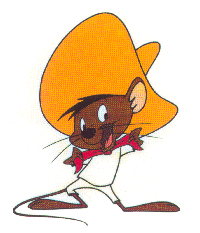
-Baldo
Baldo, created by two Latino artists-Hector Cantu and Carlos Castellanos in 2000, depicts one of the only Latino families in commercial news-run comic strips. It runs in some of the most widely read newspapers including the Washington Post and the Chicago Tribune (bostonglobe). While Baldo exists as more of a sitcom strip, imparting very little in the way of political address, it still depicts a Latino family in a positive light-one free of stereotypical references and cheap ethnic gags. Hector Cantu has been quoted as saying Baldo aims to please a mass audience with mainstream appeal, while occasionally peppering the strip with ethnic references. The authors, who are Mexican American and Cuban, also want to appeal to their wide Latino audience. However, they exist as two of only three artists signed to a major newspaper syndicate (bostonglobe). 12
Baldo was started in 2000 by Hector Cantu and Carlos Castellanos as a comic strip that
shared the Latino teenage experience with the American audience. Baldo lives in and is
influenced by the American and the Latin American cultures. His father has a strong
influence in his life, as does his sister Gracie and Tia Carmen. His mother is, for now,
nonexistent. Instead, the emphasis is placed on the father-son relationship, as well as
the contributing relations between Baldo and the women in his life. Good artwork and good
writing, with gentle humor and warmth, makes Baldo successful. 18
“In the end, Carlos and Hector say, the main goal
of Baldo is to simply bring a different perspective to the comics pages. ‘Growing up
Latino in the United States can be a great experience ... It can be hard. It can be an
exciting experience. It can be rewarding. It can be funny. We hope that through Baldo we
can share some of the humorous part with people everywhere.’” 18
Baldo gives the American viewers a different perspective on Latino lifestyles and
customs. To depict the obstacles of youth, while utilizing humor, is an important
contribution to the understanding of this culture. It a comic strip that does not intend
on offending or perpetuating negative racial images, but instead offers another look into
this aspect of Latin American experiences.
